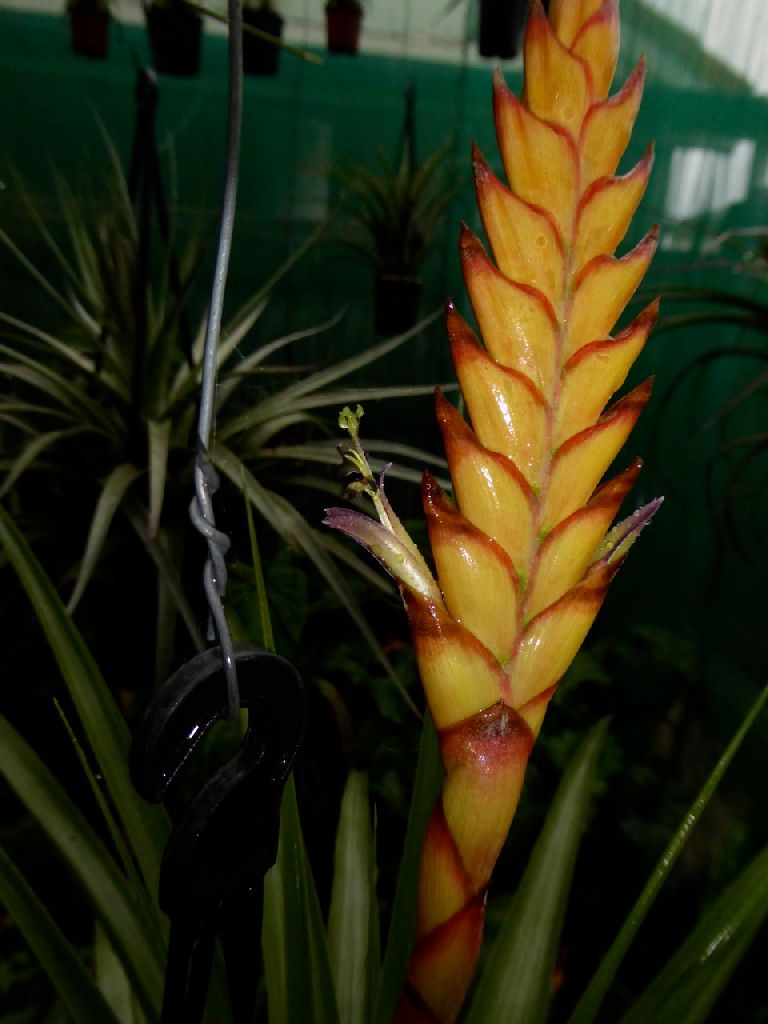
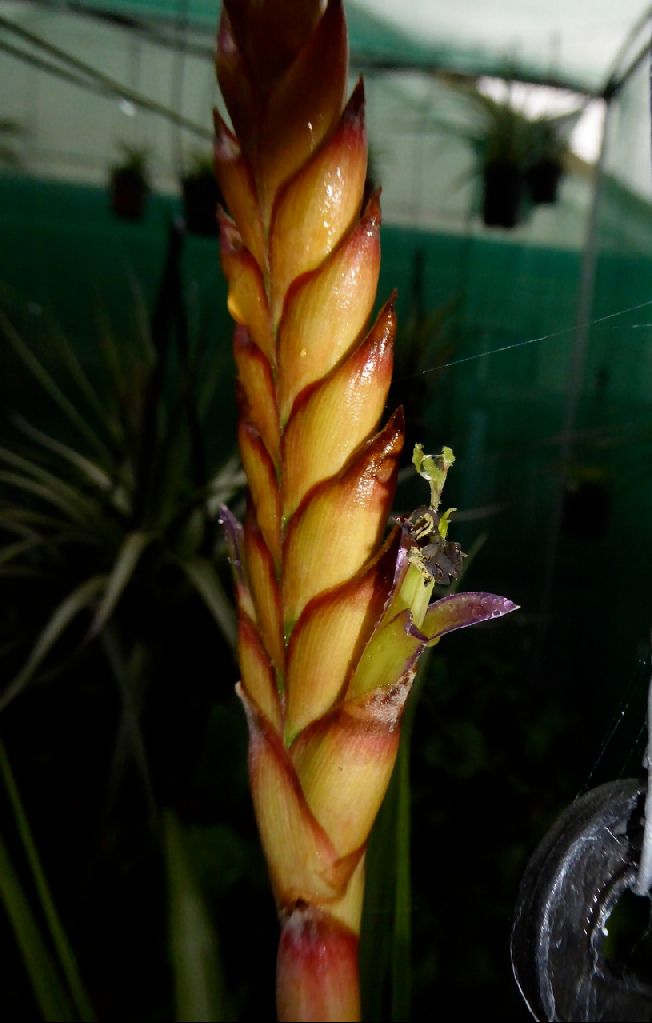
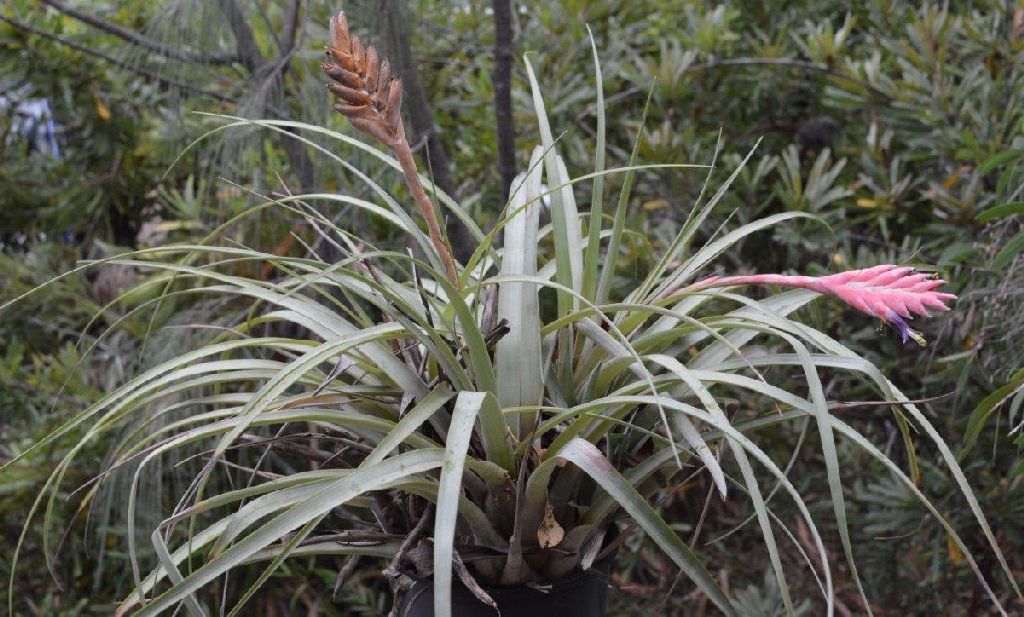
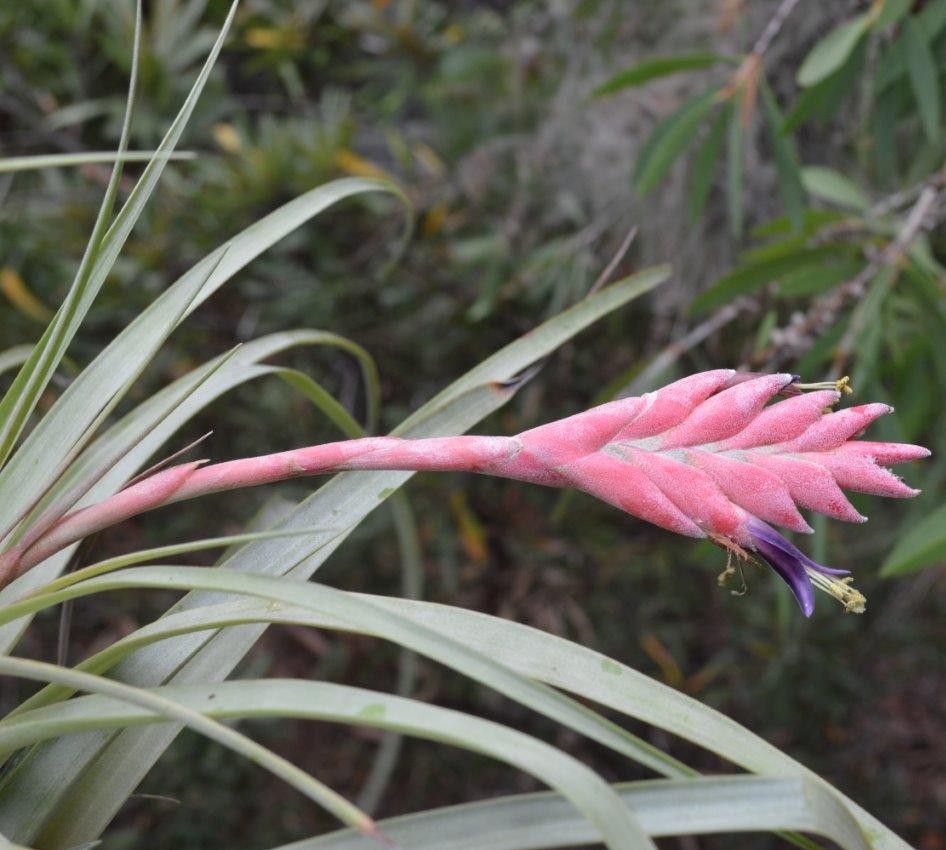
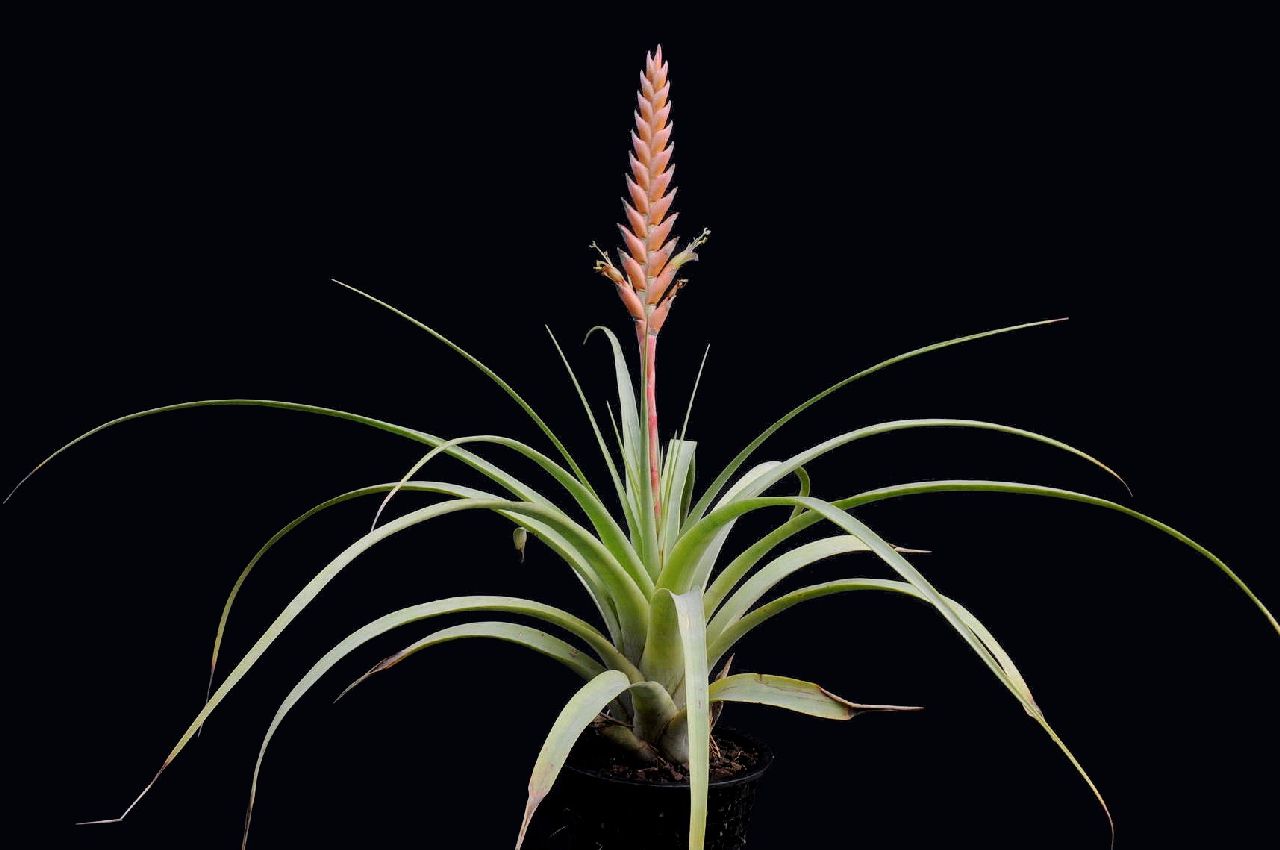
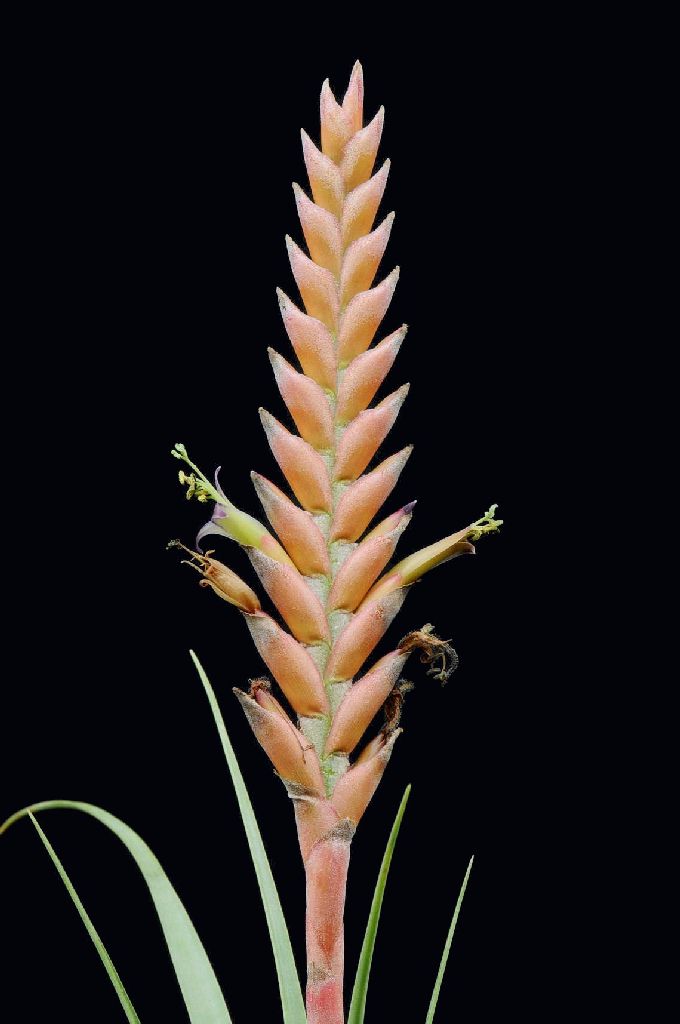
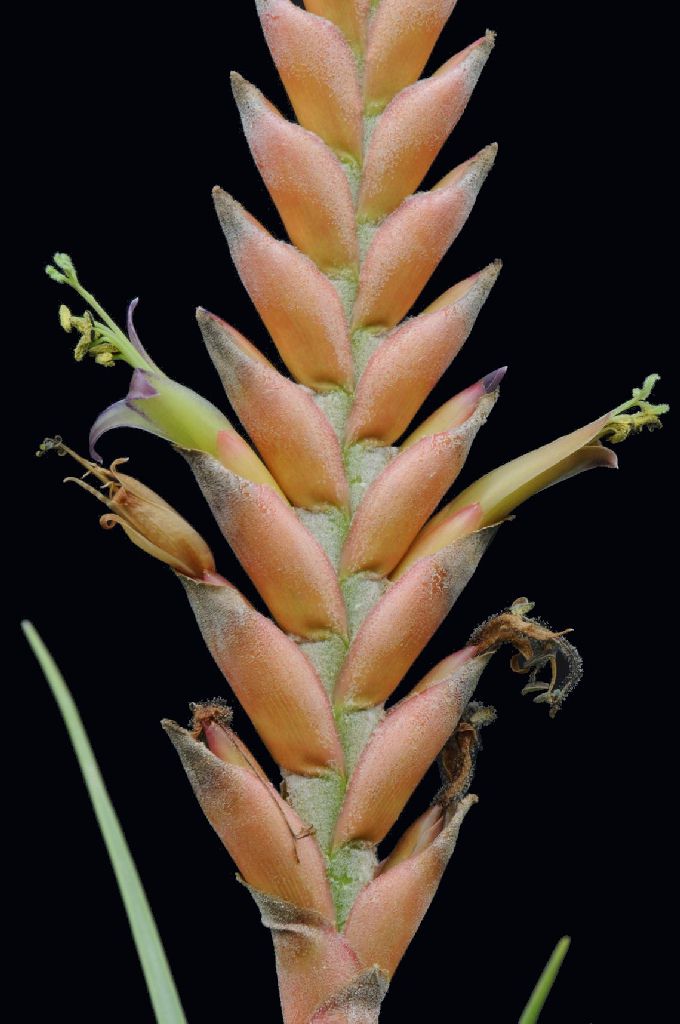
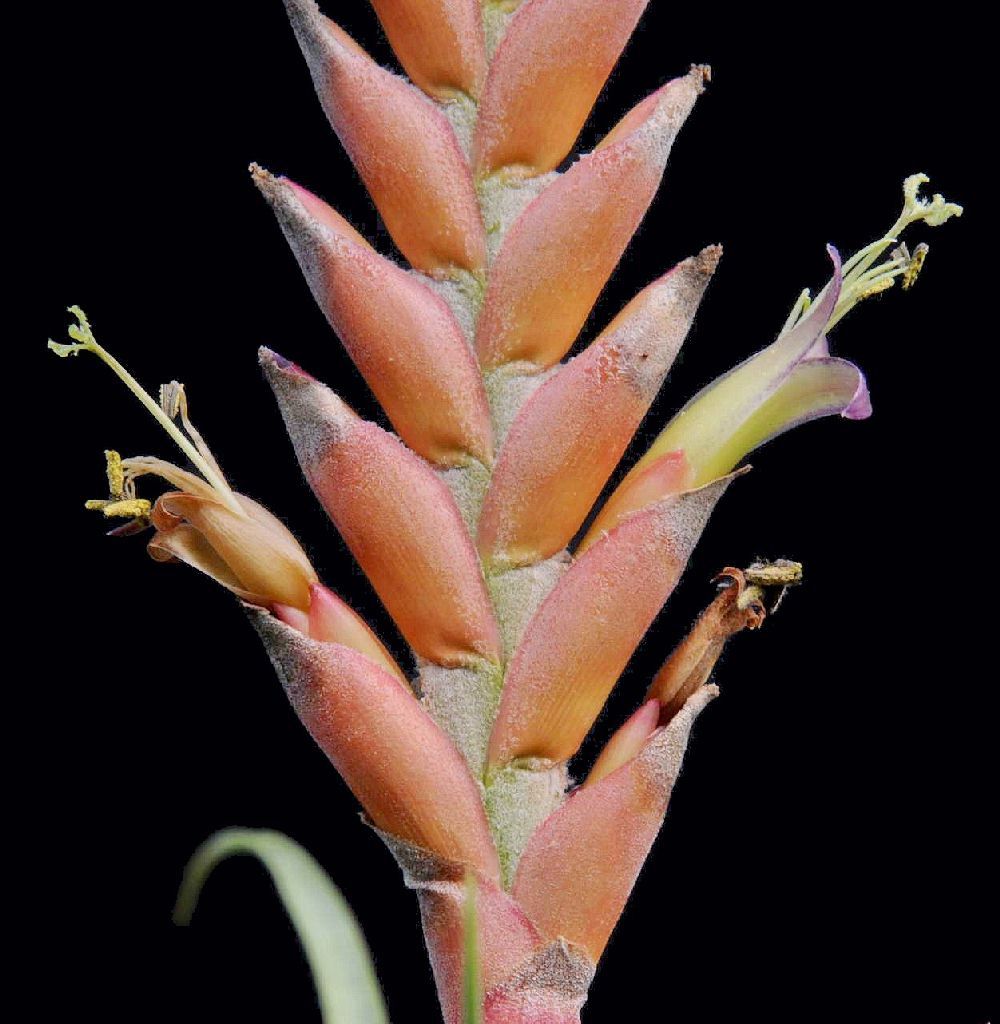
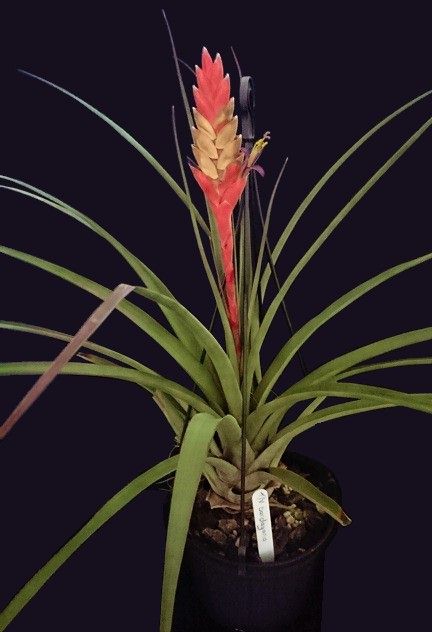
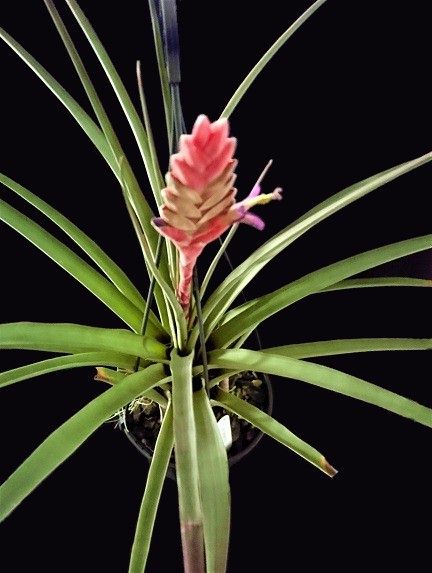
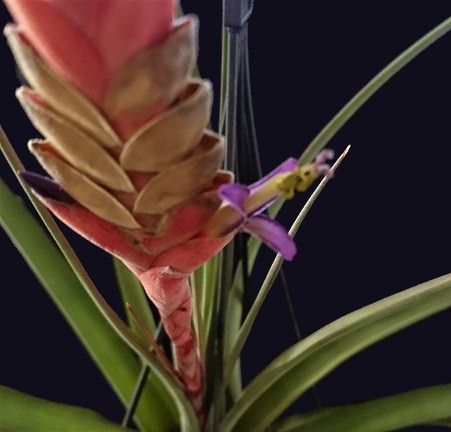
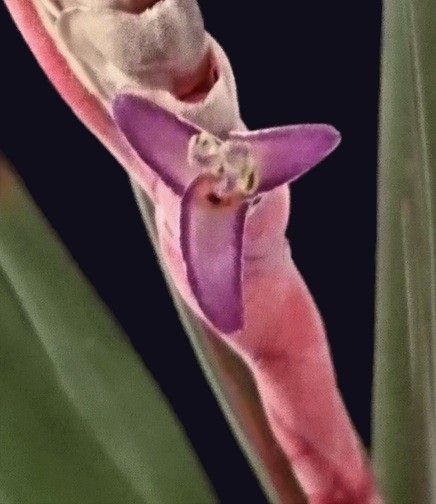
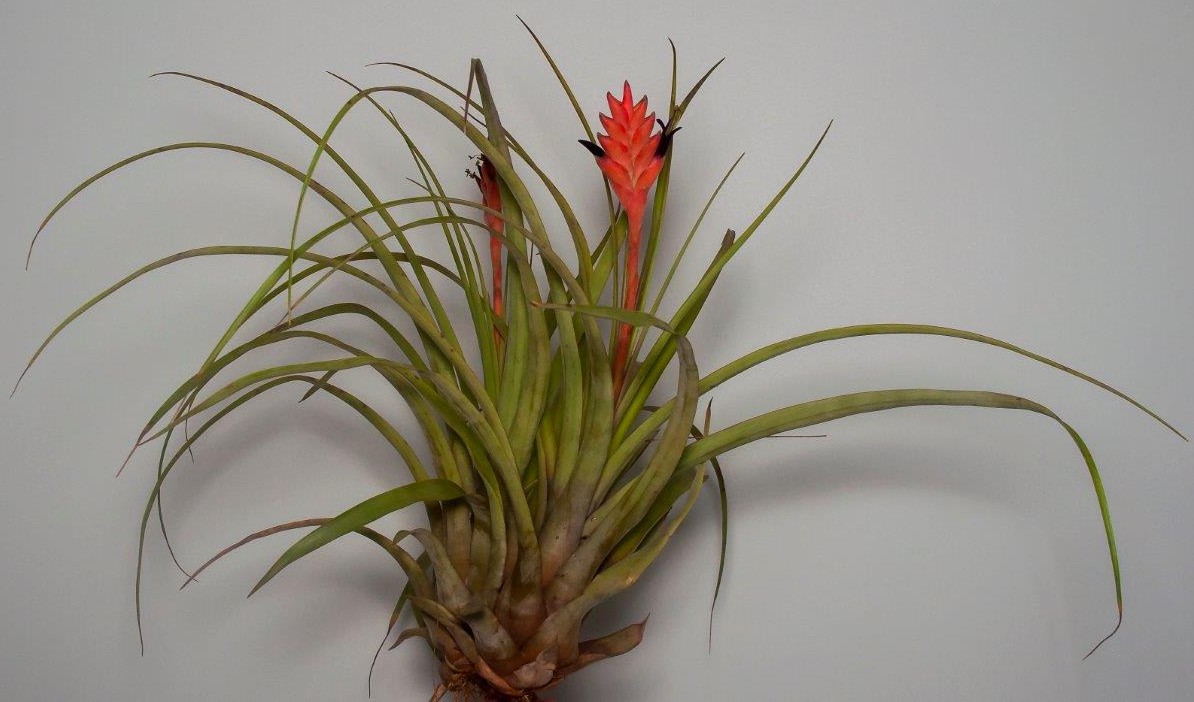
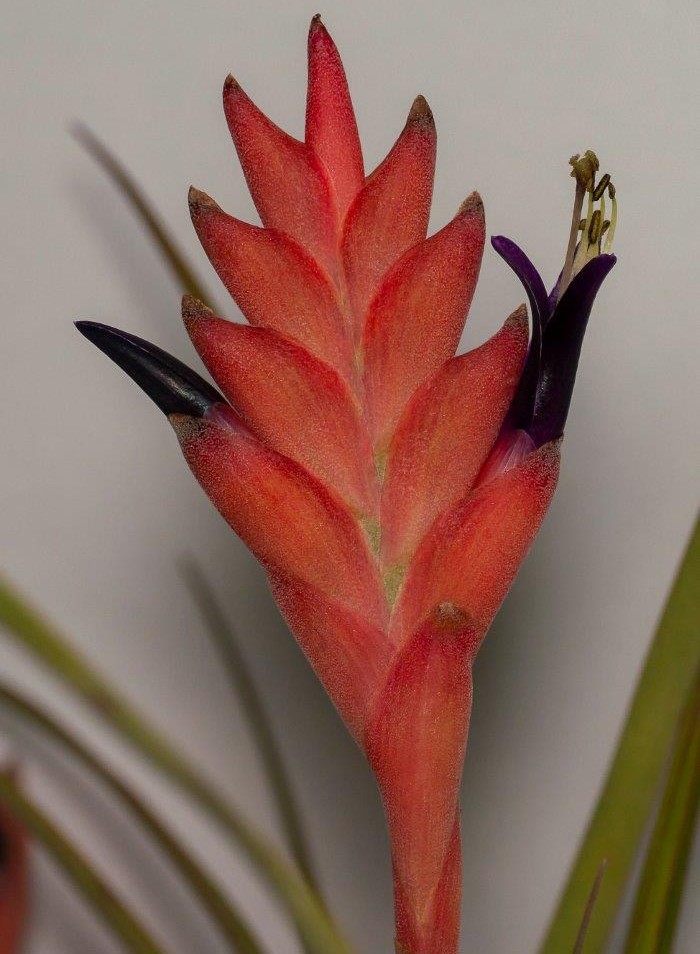
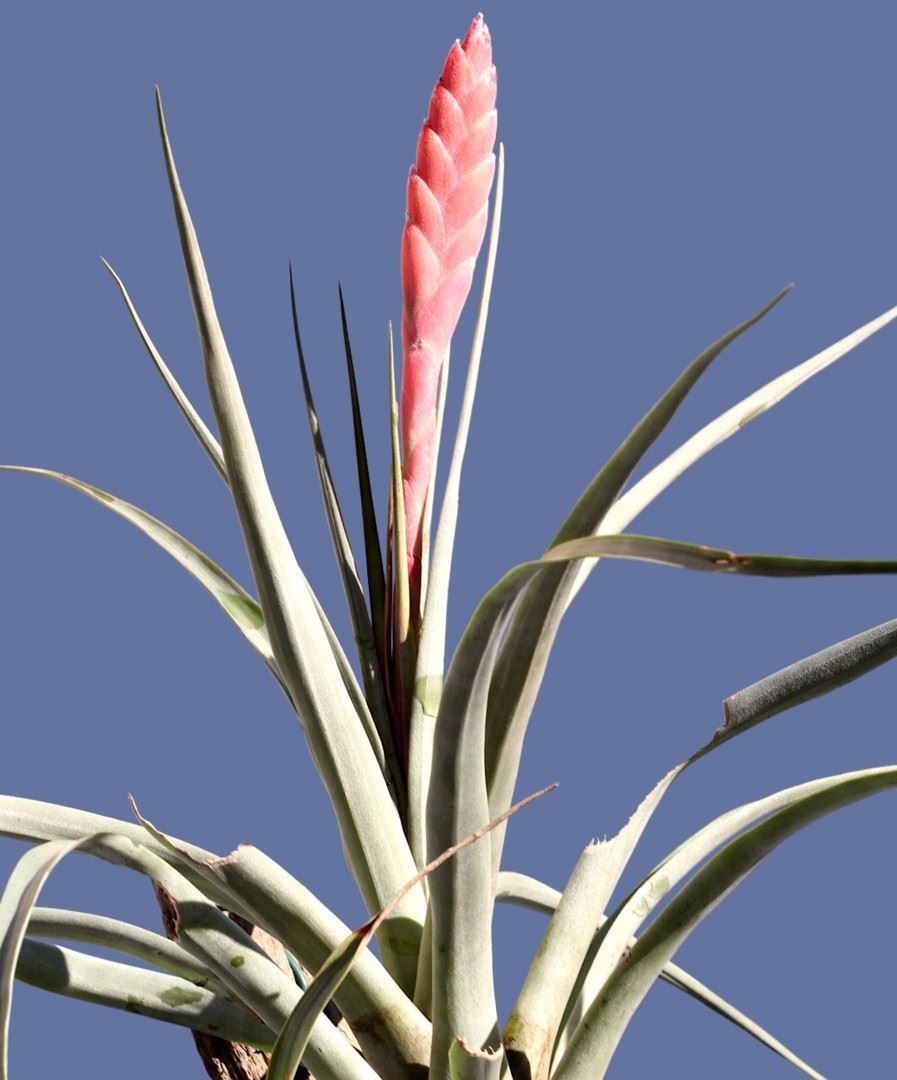
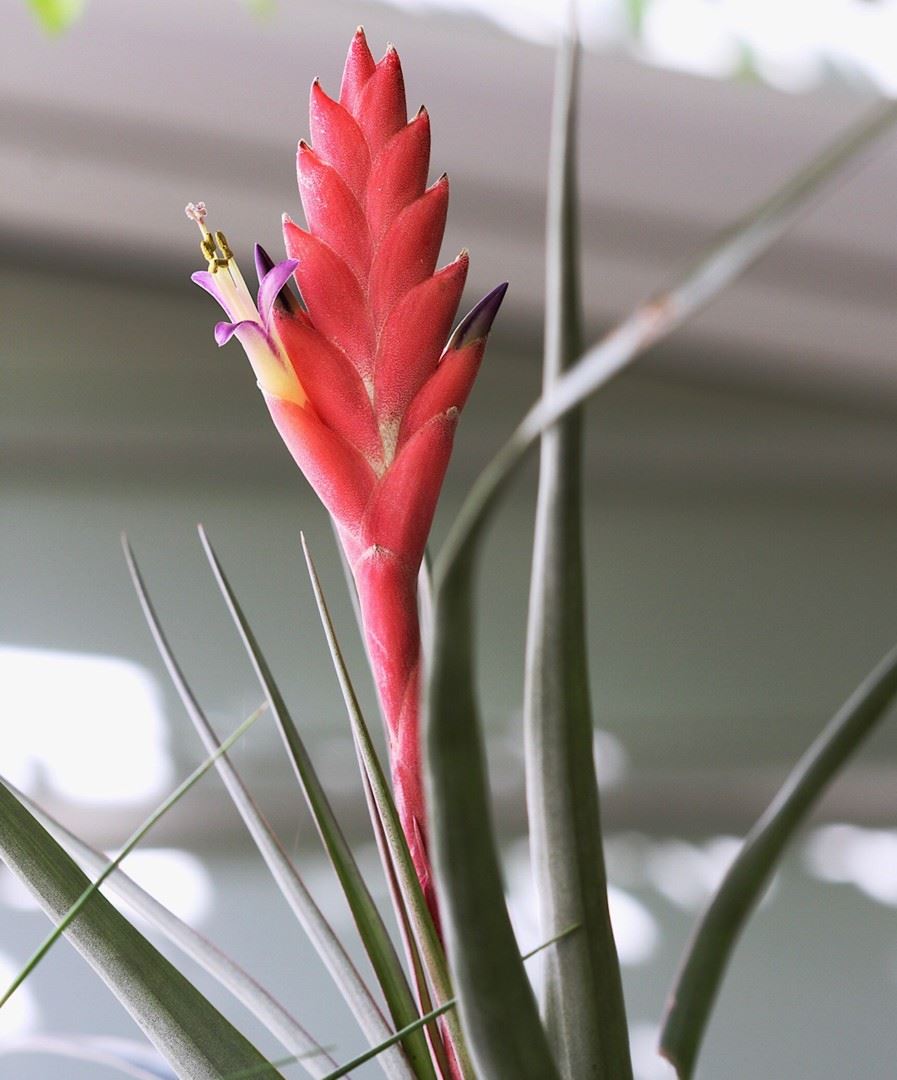
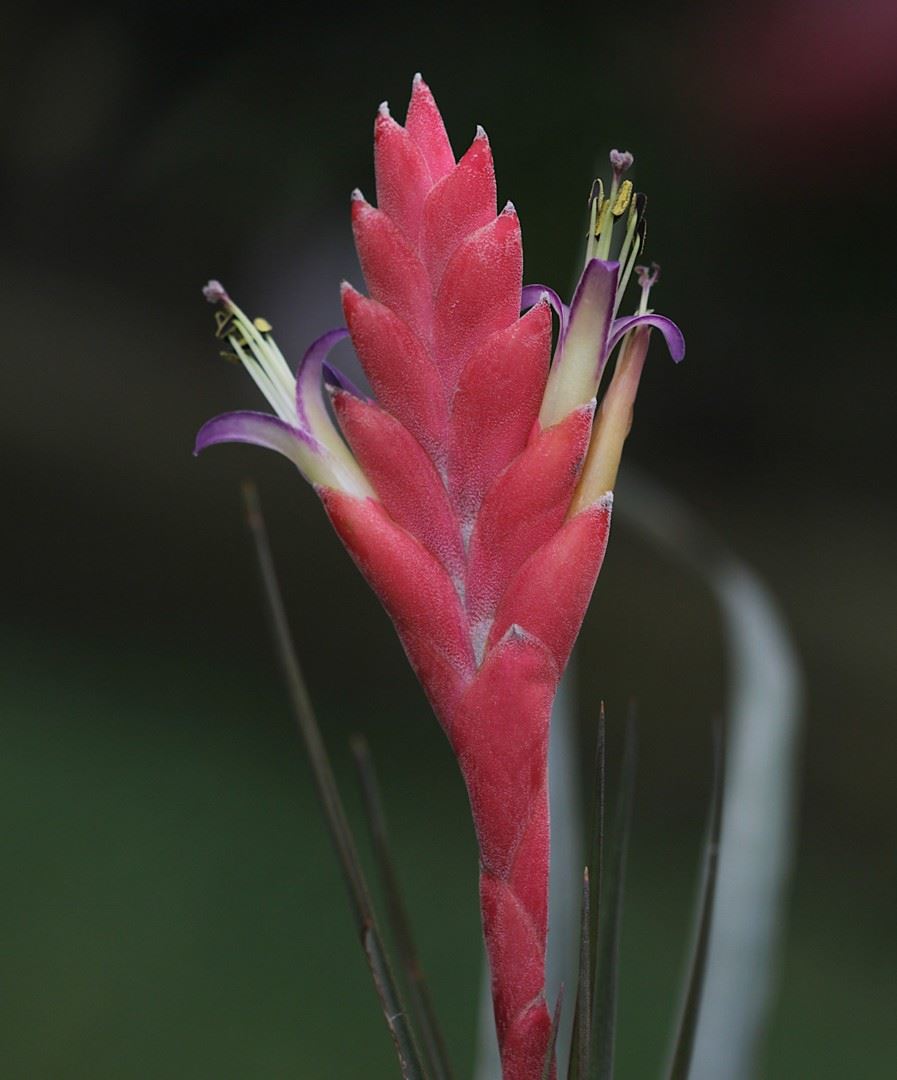
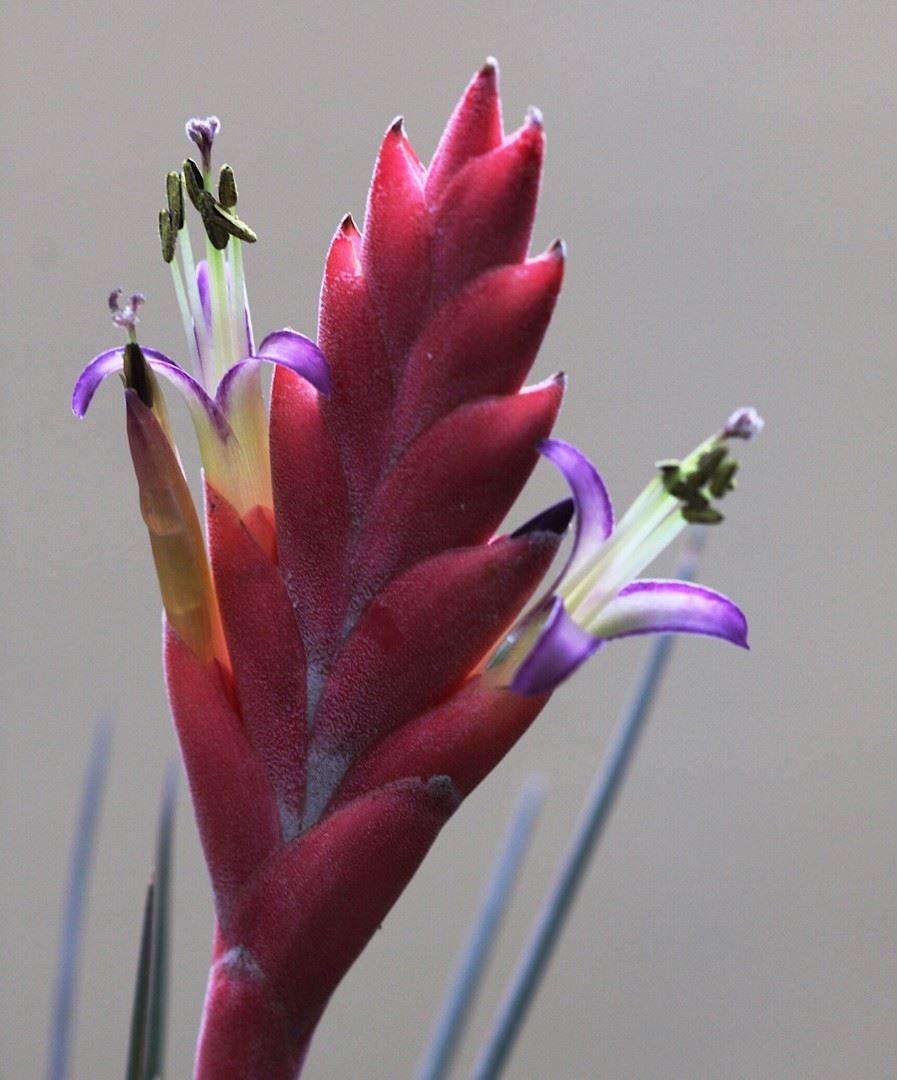
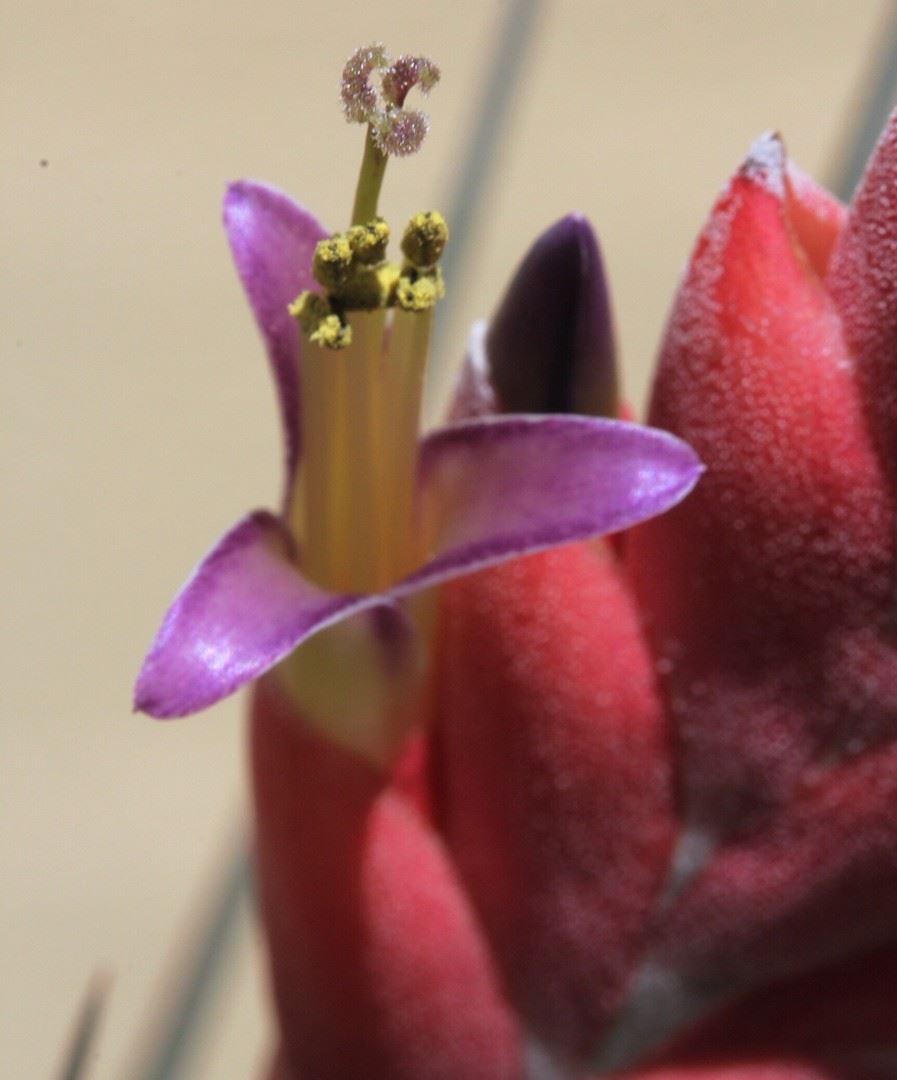
Vriesea barclayana var barclayana
Tillandsia barclayana Baker, Jour. Bot. London 25: 239. 1887.
Plant flowering 40-60 cm high.
Inflorescence 15-30 cm long, 40-50 mm wide, 15-25-flowered.
Floral bracts 28-37 mm long.
Type. Barclay 622 (holotype BM, GH Photo), Valdivia, Guayas, Ecuador, Nov 1836.
DISTRIBUTION. Epiphytic in dry scrub forest, 0-820 m alt, western Ecuador. ECUADOR. MANABI: Puerto Cayo, 13 Oct 1952, Fagerlind & Wibam 622 (S, US). CUAVAS: Ayangue, 31 Nov 1961, Gilmartin 515 (US); Manglaralto, 24 Mar 1962, Gilmartin 650 (US). ORO: Rio Calera, Zaruma, 21 Aug 1947, R. Espinosa E-1840 (US).
Tillandsia barclayana v. minor (Gilmartin) Butcher, Bromeliaceae 43(6):5. 2009.
Vriesea barclayana var minor Gilmartin, Phytologia 16: 164. 1968.
Tillandsia lateritia Andre, Enum. Bromel. 6. 13 Dec 1888; Revue Hort. 60: 566. 16 Dec 1888.
Tillandsia barclayana Baker var. minor (Gilmartin) Butcher comb. nov. BASIONYM: Tillandsia lateritia Andre, Enum. Bromel. 6. 13 Dec 1888; Revue Hort. 60: 566. 16 Dec 1888. TYPE. Andre 4057 (holotype K, type of TiIIandsia Iateritia Andre, GH photo), Saballetas at foot of Chimborazo, Bolivar, Ecuador, Jul 1876.
This should have been
Tillandsia barclayana Baker var. minor (Gilmartin) Butcher comb. nov. BASIONYM: Vriesea barclayana var minor Gilmartin, Phytologia 16: 164. 1968.
= Tillandsia lateritia Andre, Enum. Bromel. 6. 13 Dec 1888; Revue Hort. 60: 566. 16 Dec 1888. TYPE. Andre 4057 (holotype K, type of TiIIandsia Iateritia Andre, GH photo), Saballetas at foot of Chimborazo, Bolivar, Ecuador, Jul 1876.
Plant flowering 30-45 cm high.
Inflorescence 5-12 cm long, 30-35 mm wide, 9-18-flowered.
Floral bracts 18-22 mm long.
Type. Andre 4057 (holotype K, type of Tillandsia lateritia Andre, GH photo), Saballetas at foot of Chimborazo, Bolivar, Ecuador, Jul 1876.
DISTRIBUTION. Saxicolous and epiphytic in dry habitats, 600-900 m alt, Ecuador. ECUADOR. GUAVAS: km 79, Guayaquil to El Tambo, 21 Sep 1963, Gilmartin 863 (US). ORO: Portovelo, Zaruma, Aug-Sep 1923, Hitchcack 21247 (GH, US). BOLIVAR: Sabanetas at foot of Chim¨borazo, Sodiro 171/26 (B), CHIMBORAZO: Rio Chanchan, Naranjapata to Huigra, 19 Jun 1945, Camp E-3899 (NY, US).
Detail from Gilmartin 1972
Vriesea barclayana (Baker) L. B. Smith, 1951 (Contrb. U. S. nat. Herb. vol. 29, no. 10) pp. 517-518, fig. 75.
Tillandsia barclayana Baker, 1887 (Journ. Bot. vol. 25) p. 239.
PLANT ca. 30-60 cm tall;
LEAVES 40-50 cm long, blades 2.0-2.5 cm wide, narrowly triangular, densely gray-lepidote throughout, apex filiform, sheath 6.0-10.0 cm long by 5.0-6.0 cm wide, elliptic, dark castaneous;
SCAPE ca. 6 mm in diameter, curving;
SCAPE-BRACTS 4.0-20.0 cm long, erect with apices spreading, apices acute near inflorescence, long-caudate below, imbricate throughout, totally obscuring scape;
INFLORESCENCE 5.0-30.0 cm long by 3.0-5.0 cm wide exclusive of capsules, simple, dense, distichous, having 9 to 25 flowers, curving, lepidote;
FLORAL BRACTS 1.8-3.7 cm long by 1.5-2.5 cm broad, elliptic, apex acute, coriaceous, lepidote without especially toward apices, glabrous within, ecarinate, not nerved, lustrous, orange-yellow, erect, scarcely imbricate;
SEPALS 1.8-2.3 cm long by ca. 1.0 cm wide, ovate, apex acute, glabrous without and within, coriaceous, ecarinate, not nerved;
PETALS 3.0-4.0 cm long with stigma exserted and stamens equal to or slightly exceeding petals with two basal scales;
CAPSULE ca. 6.0 cm long, distance between flowers 0.9-1.1 cm.
7. Vriesea barclayana var. barclayana
Plant 40-60 cm tall, inflorescence 15-30 cm long by 4.0-5.0 cm wide with 15-35 flowers, floral bracts 2.8-3.7 cm long.
MATERIAL EXAMINED: Barclay 622 (BM, TYPE; US, photo) near Valdivia, Prov. Guayas, near sea level, 1836; AJG 515 (US) epiphytic, 2.5 km southeast of Ayangue, cactus-deciduous scrub, common, Prov. Guayas, near sea level, 31 Nov. 1961; AJG 650 (US) epiphytic, open scrub, 12 km south of Manglaralto, Prov. Guayas, near sea level, 24 March 1962; Fagerlind and Wibom 622 (US) Puerto Cayo, west of Jipijapa, near coast, Prov. Manabi, near sea level, 13 Oct. 1952; Espinosa E. 1840 (US) epiphytic, near river, Rio Calcra, west of Zarutna, Prov. El Oro, 820 in, 21 Aug. 1947.
8. Vriesea barclayana var. minor Gilmartin, 1968 (Phytologia vol. 16, no. 2) p. 164.
Tillandsia lateritia Andre, 1888 (Enumeration Bromel.) p. 6; Andre, 1889, pp. 76-77, pl. 21; Mez. 1935, p. 553, pro parte.
A var. T. barclayana minoribus, ad 45 cm longis; inflorescentia brevioribus; bracteis florigeris 1.8-2.6 cm longis differt.
Plant like the typical variety but smaller, 30-45 cm tall, inflorescence 5.0-12.0 cm long by 3.0-3.5 cm wide and having 9 to 18 flowers; floral bracts 1.8-2.2 cm long.
MATERIAL EXAMINED: Andre 4057 (K, TYPE; TYPE of T. lateritia) Sabanetas, at foot of Chimborazo, Prov. Bolivar, July 1876; Sodiro 171/26 (B: US, photo) near Sabanetas, Prov. Bolivar, July 1872; Camp E-3899 (US) between Naranjapata and Huigra, saxicolous, Rio Chanchan canyon, Prov. Chimborazo, 600-900 m, 19 June 1945; Hitchcock 21247 (US) epiphytic, on dry hill, Portovelo near Zaruma, Prov. El Oro, 600-1000 m, 30 Aug. - 1 Sept. 1923; AJC 863 (US) km 79 Guayaquil-El Tambo, Prov. Guayas, 75 m, 21 Sept. 1963.
NOTES: The new variety, minor Gilmartin of Vriesea barclayana is probably mostly related to geographic location, the smaller on being found somewhat inland. Possibly the two varieties may come together in Prov. El Oro. The TYPE of the variety, minor, is from well inland where the Andes begin to ascend and at about 700 m. The TYPE of the typical variety is from the coast not far from the Pacific Ocean.